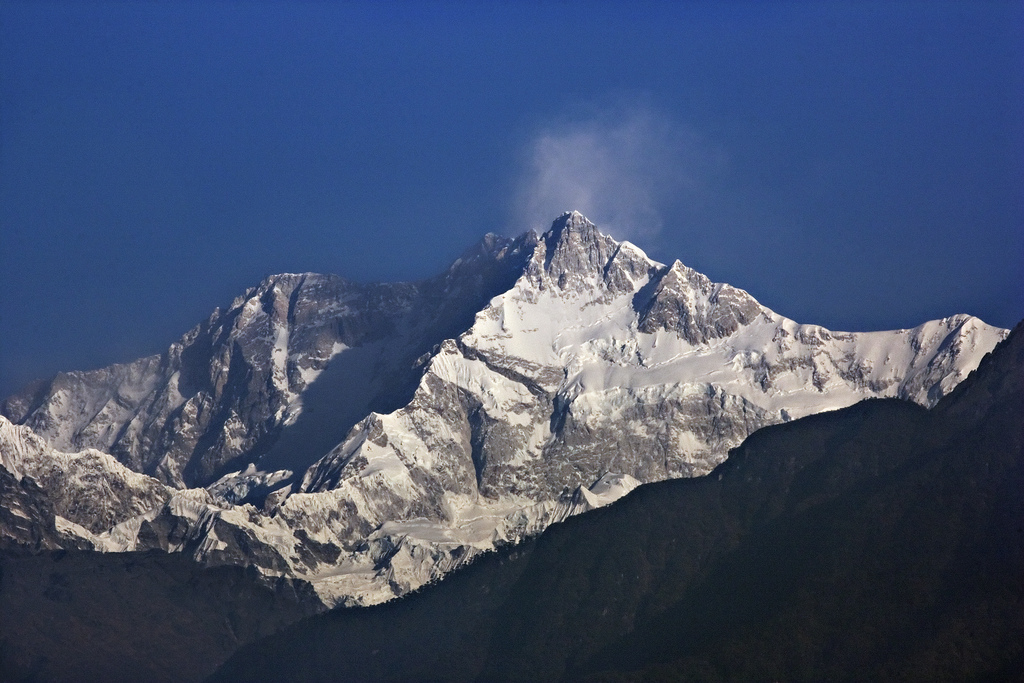Kangchenjunga

Description
Kangchenjunga is the third highest mountain in the world after Mount Everest and K2 and is a part of the Himalayan mountain range. Kangchenjunga has five peaks, four of them over 8450 meters. Three of the five peaks (main, central and south) are on the border of North Sikkim district of India and Taplejung District of Nepal, while the other two are in Nepal.
Religion and Mythology
The people of Sikkim revere Kangchenjunga as a sacred mountain. They regard it as their God and guardian. Kangchenjunga translated means “The Five Treasures of Snows” (because of its five peaks) in the local dialect, the treasures representing the five repositories of God, which are gold, silver, gems, grains and the holy books. They believe that the orginal man and woman from whom all Sikkimese descended were created beneath the slopes of this sacred mountain. The mountain is so sacred to the local people that the first expedition to climb it successfully – a British group led by the mountainneer Charles Evans in 1955 – supposedly turned back in deference to the religious sentiments of the Sikkimese.
There is an annual ‘Pang Lhabsol’ festival of ritual and dance dedicated to the snow range of Khang-Chen-Dzong-Nga as well as the local deities and protectors of Sikkim. It is celebrated during the early part of autumn. Lamas dressed in impressive masks and brocades of the God, parnce and whirl against the backdrop of the mountain itself. Kangchenjunga is portrayed as a fiery red-faced deity with a crown of five skulls, riding a snow lion.
Ecological Attributes
The mountainous regions of the Kangchenjunga Himalayas form part of the 850 sq.km. Khangchenjunga National Park, situated in North district of Sikkim bordering Nepal. The park comprises of wet temperate forests at the lower levels, rising to bare rock, ice and snow of the peaks. The variation of altitude and vegetation has enriched the park area with a rich variety of flora and fauna. The temperate forests are dominated by Quercus spp., Schima spp., Castanopsis spp., Acer spp., Betula spp., Himalayan Larch etc. Tha park has about 454 types of orchid, over 600 species of butterflies, 550 species of birds, clouded leopards, snow leopards, tahr, musk deer, red panda and bintorong. There are many glaciers in the park area, amongst them the Zemu glacier, the largest in the eastern Himalayas.



Location: Sikkim (and Nepal's eastern border)
Altitude: 8586 meters